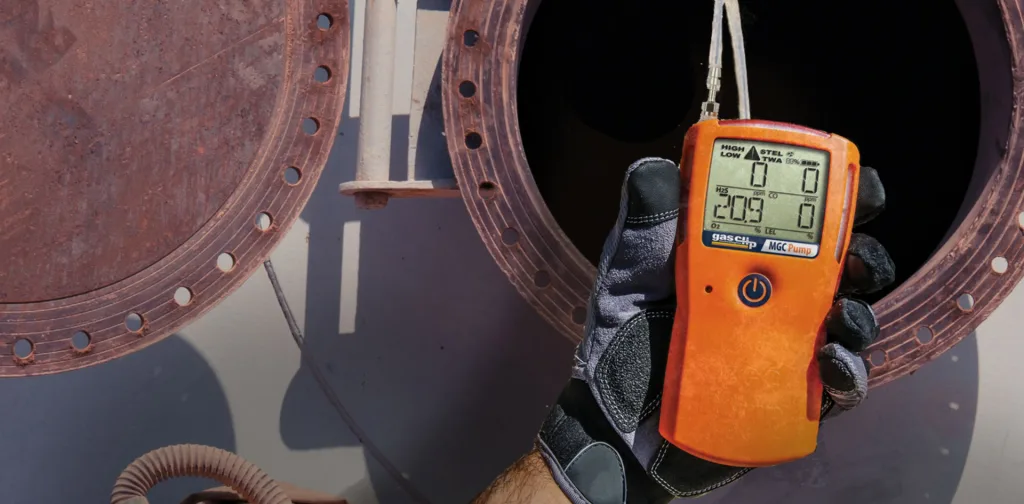Introduction
Worksite hazards are not always visible. Toxic gases, volatile compounds, and radioactive materials can pose serious threats to worker health and safety—often without any obvious warning signs. That’s why atmospheric testing is a critical part of workplace safety, ensuring that the air workers breathe is free from dangerous contaminants.
From continuous gas detection to NORM (Naturally Occurring Radioactive Material) testing, proper atmospheric monitoring helps identify risks before they become a serious threat. In this blog, we’ll explore the importance of atmospheric testing, the types of unseen hazards it detects, and how companies can ensure compliance and worker protection.
Why Is Atmospheric Testing Essential?
Many industrial operations—such as oil and gas extraction, chemical processing, and confined space entry—take place in environments where air quality can fluctuate rapidly. Without proper testing, workers can be exposed to harmful gases and airborne contaminants, leading to serious health issues or even fatalities.
Key reasons for conducting regular atmospheric testing include:
- Early hazard detection – Identifying unsafe conditions before workers are exposed
- Regulatory compliance – Meeting industry safety standards and environmental guidelines
- Worker protection – Reducing the risk of respiratory diseases and toxic exposures
- Operational safety – Preventing explosions, fires, and other worksite incidents
Key Hazards Identified Through Atmospheric Testing
1. Oxygen Deficiency & Enrichment
- Oxygen-deficient environments (below 19.5% oxygen) can cause dizziness, unconsciousness, or suffocation.
- Oxygen-enriched atmospheres (above 23.5%) increase the risk of combustion and fire hazards.
Testing ensures that oxygen levels remain within safe operating limits.
2. Toxic Gases (H2S, CO, Benzene, and More)
Industrial worksites often contain dangerous gases, including:
- Hydrogen Sulfide (H2S) – A highly toxic gas found in oil and gas operations, leading to respiratory distress or fatalities at high concentrations.
- Carbon Monoxide (CO) – A colorless, odorless gas that can cause poisoning even at low levels.
- Benzene – A known carcinogen commonly found in petroleum processing, posing serious long-term health risks.
Continuous gas detection is vital for identifying these unseen dangers before they reach dangerous levels.
3. Explosive and Flammable Vapors
In industries handling hydrocarbons and volatile chemicals, atmospheric testing detects lower explosive limits (LEL) and upper explosive limits (UEL) to prevent fire or explosion hazards.
4. NORM (Naturally Occurring Radioactive Material)
NORM accumulates in industrial equipment, storage tanks, and pipelines, exposing workers to radioactive materials without proper testing. Regular radiation monitoring ensures that contamination is identified and properly managed.
How Atmospheric Testing is Conducted
- Portable & Continuous Gas Monitoring
Workers use portable gas detectors for personal protection in confined spaces, while fixed gas detection systems continuously monitor air quality across entire work areas. - NORM Surveys & Radiation Testing
Specialized instruments, such as Geiger counters and scintillation detectors, are used to test for radiation buildup in pipelines, drilling equipment, and storage tanks. - Confined Space Air Sampling
Before entering confined spaces (such as tanks or vessels), air sampling ensures oxygen levels are safe and free from toxic gases. - Real-Time Remote Monitoring
Advanced atmospheric testing technology allows real-time data collection and alerts, ensuring immediate response to changing air conditions.
Regulatory Compliance and Workplace Safety
Industries handling hazardous gases and NORM are subject to strict health and safety regulations. Proper atmospheric testing helps meet:
- Occupational exposure limits (OELs) for toxic gases
- Confined space entry safety standards
- Radiation protection requirements
Failing to conduct routine atmospheric testing can lead to severe fines, operational shutdowns, and serious health risks for workers.
Conclusion
Atmospheric testing is a non-negotiable aspect of workplace safety. Whether detecting toxic gases, oxygen imbalances, flammable vapors, or radioactive materials, proper air monitoring protects workers, ensures regulatory compliance, and enhances overall job site safety.


